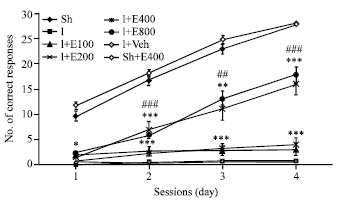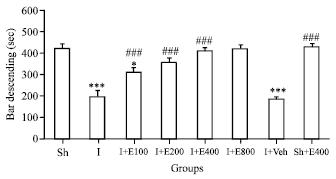Research Article
Motor and Cognitive Deficits due to Permanent Cerebral Hypoperfusion/ischemia Improve by Pomegranate Seed Extract in Rats
Department of Biology, Faculty of Sciences, Isfehan Payamenoor University, Isfehan, Iran
Alireza Sarkaki
Physiology Research Center, Ahvaz Jundishapur University of Medical Sciences, Ahvaz, Iran
Seyed Mohammad Taghi Mansouri
Department of Pharmacology, Faculty of Medicine, Ahvaz Jundishapur University of Medical Sciences, Ahvaz, Iran
Asghar Pilevarian
Department of Biology, Faculty of Sciences, Isfehan Payamenoor University, Isfehan, Iran
Maryam RafieiRad
Department of Biology, Faculty of Sciences, Islamic Azad University, Izeh Branch, Izeh, Iran










